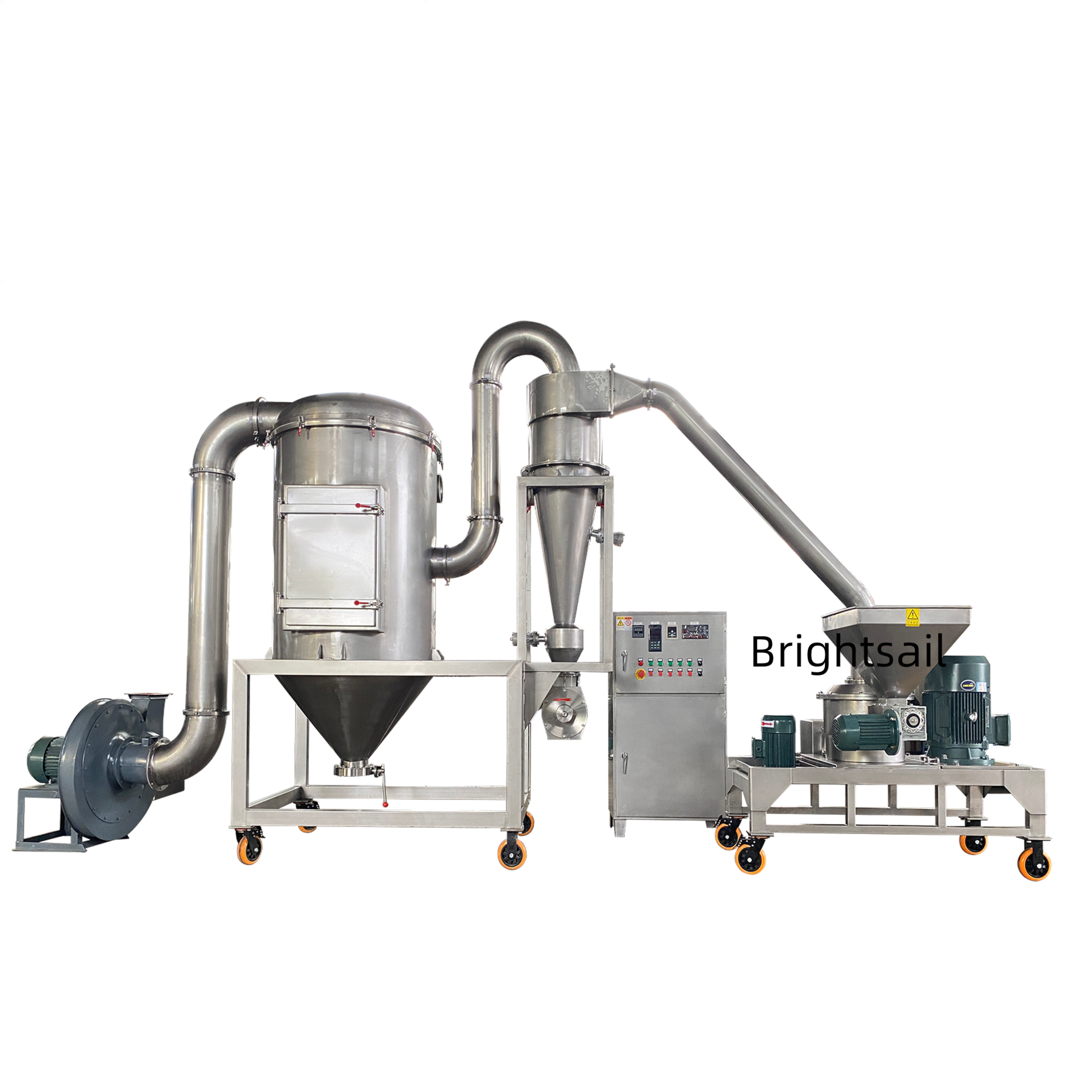Introduction to Air Classifiers
- Air classifiers are commonly employed in industrial processes like food processing, cement, chemicals, cosmetics, pharmaceuticals, and pigments to separate particles by density, shape, and size.
- They use air drag and centrifugal force to separate particles by mass and inertia, making them well suited for various industries.
- The working principle of air classifiers allows for efficient and fast separation of particles with varying physical characteristics.
- Air classifiers improve processing by classifying materials more efficiently and controlling air pollution.
- They are most effective for dry materials with particles smaller than 100 mesh (149 microns) and often used with grinding machines.

Air Classification Process
- The air classification process involves the use of air flow to separate coarse particles from fine particles, achieving precise particle size distribution.
- Air classifiers control particle size separation using airflow, classifier aperture, feed rate-to-air ratio, and classifier wheel speed.
- The process is carried out in a grinding chamber where material enters and is crushed into fine particles by high-speed rotor impact.
- The air stream carries the crushed material into the upper classifying area of the mill, where finer particles are separated from larger particles.
- The classifier wheel rotates at high speed, applying centrifugal force to separate fine particles and achieve particle size consistency.

Working Principle of the ACM
- The ACM air classifier mill uses dynamic air classifiers to control particle size distribution down to D97 < 20 µm.
- The mill recirculates coarse particles back into the grinding zone for efficient milling of various materials, including specialty chemicals and lithium carbonate.
- The working principle of the ACM involves the use of a high-speed hammer/rotor assembly for milling and an air classifier inside the grinding chamber to control particle size.
- The classifier wheel speed and airflow are adjusted to achieve the desired particle size distribution and minimize moisture buildup.
- The ACM is well suited for processing heat-sensitive materials and achieving lower energy consumption.
Air Classifier Mill Technology
- Air classifier mill technology combines mechanical impact crushing with air classification to produce fine powders with a narrow particle size distribution.
- The technology is utilized in various industries, including food processing, pharmaceuticals, and minerals, to achieve precise particle size control.
- Air classifier mills are designed to handle a wide range of materials, including those with high moh’s hardness, and are suitable for processing fly ash and other fine powders.
- The technology involves the use of rejector blades to separate coarse particles from fine particles and achieve particle size consistency.
- Air classifier mills are commonly employed in industrial processes to improve efficiency and reduce maintenance.

Particle Size Control
- Particle size control is a critical aspect of air classification, and is achieved through the adjustment of classifier wheel speed, airflow, and feed rate.
- The process involves the use of drag force to separate fine particles from larger particles and achieve the desired particle size distribution.
- Particle size control is essential in various industries, including pharmaceuticals, food processing, and specialty chemicals, to ensure product quality and consistency.
- Air classifiers are designed to achieve precise particle size control and are well suited for processing materials with varying physical characteristics.
- The use of air classification technology enables the production of fine powders with a narrow particle size distribution, making it an essential process in many industries.

Air Classifying Mill Applications
- Air classifying mills are widely used in various industries, including food processing, pharmaceuticals, minerals, and specialty chemicals, to produce fine powders with a narrow particle size distribution.
- The mills are suitable for processing a wide range of materials, including those with high moh’s hardness, and are designed to handle heat-sensitive materials.
- Air classifying mills are commonly employed in industrial processes to improve efficiency, reduce maintenance, and achieve precise particle size control.
- The mills are well suited for processing materials with varying physical characteristics and are utilized in various applications, including the production of fine powders, pigments, and lithium carbonate.
- Air classifying mills are an essential part of many industrial processes, and are designed to achieve precise particle size control and minimize moisture buildup.
- Our customers often use the air classifier mill to crush dry materials, such as food, sugar, salt, neem leaves, dried flowers, etc.




